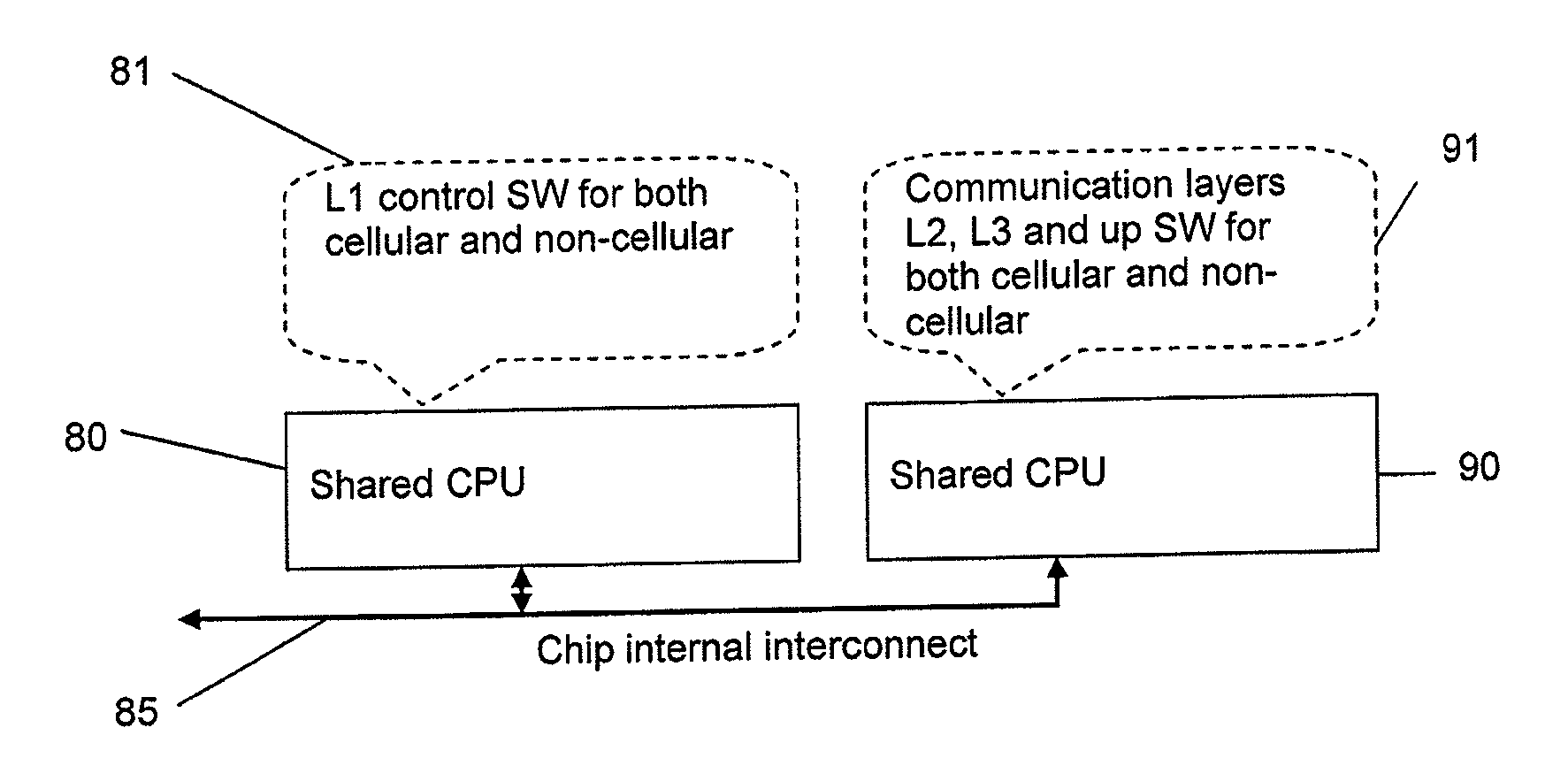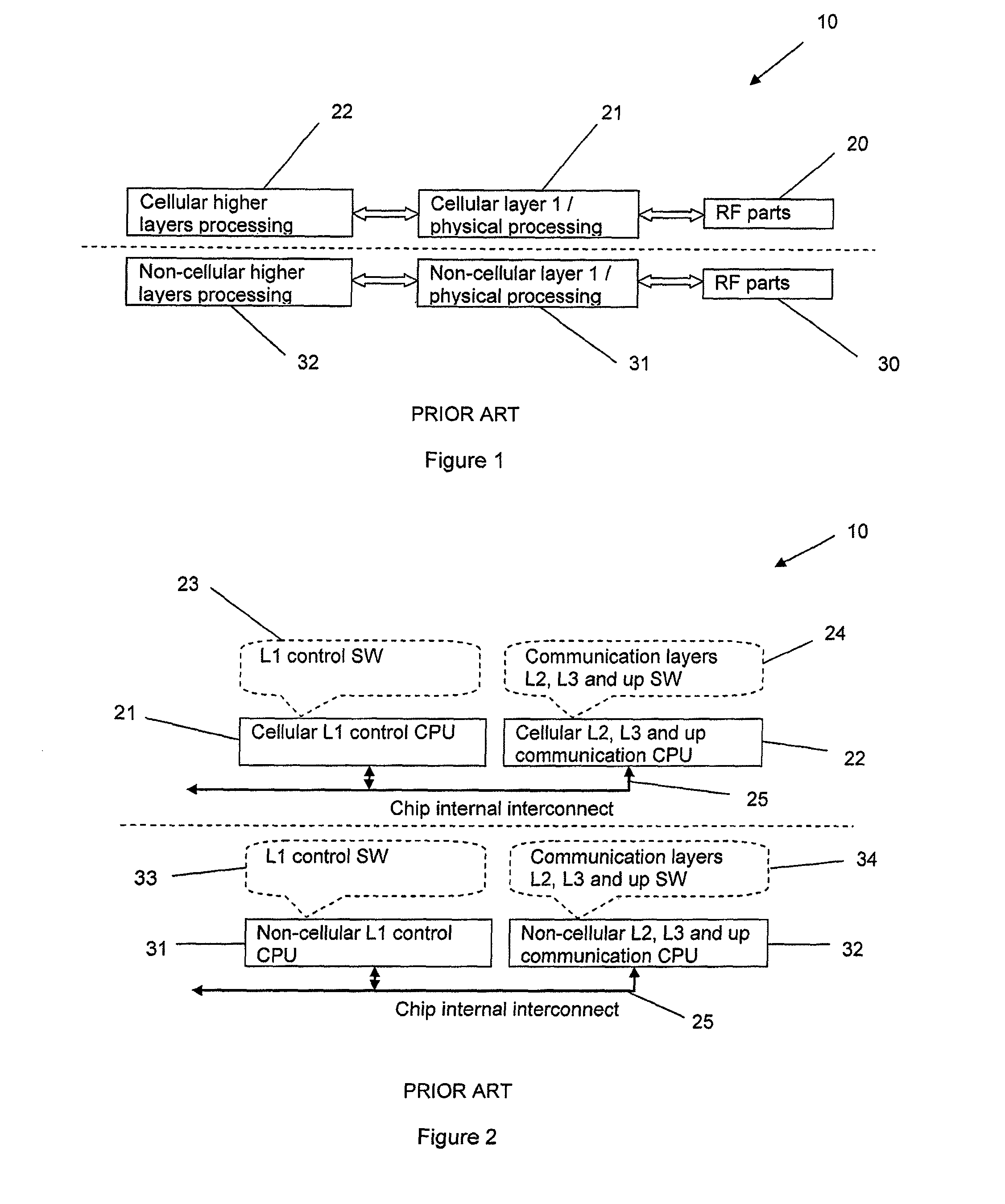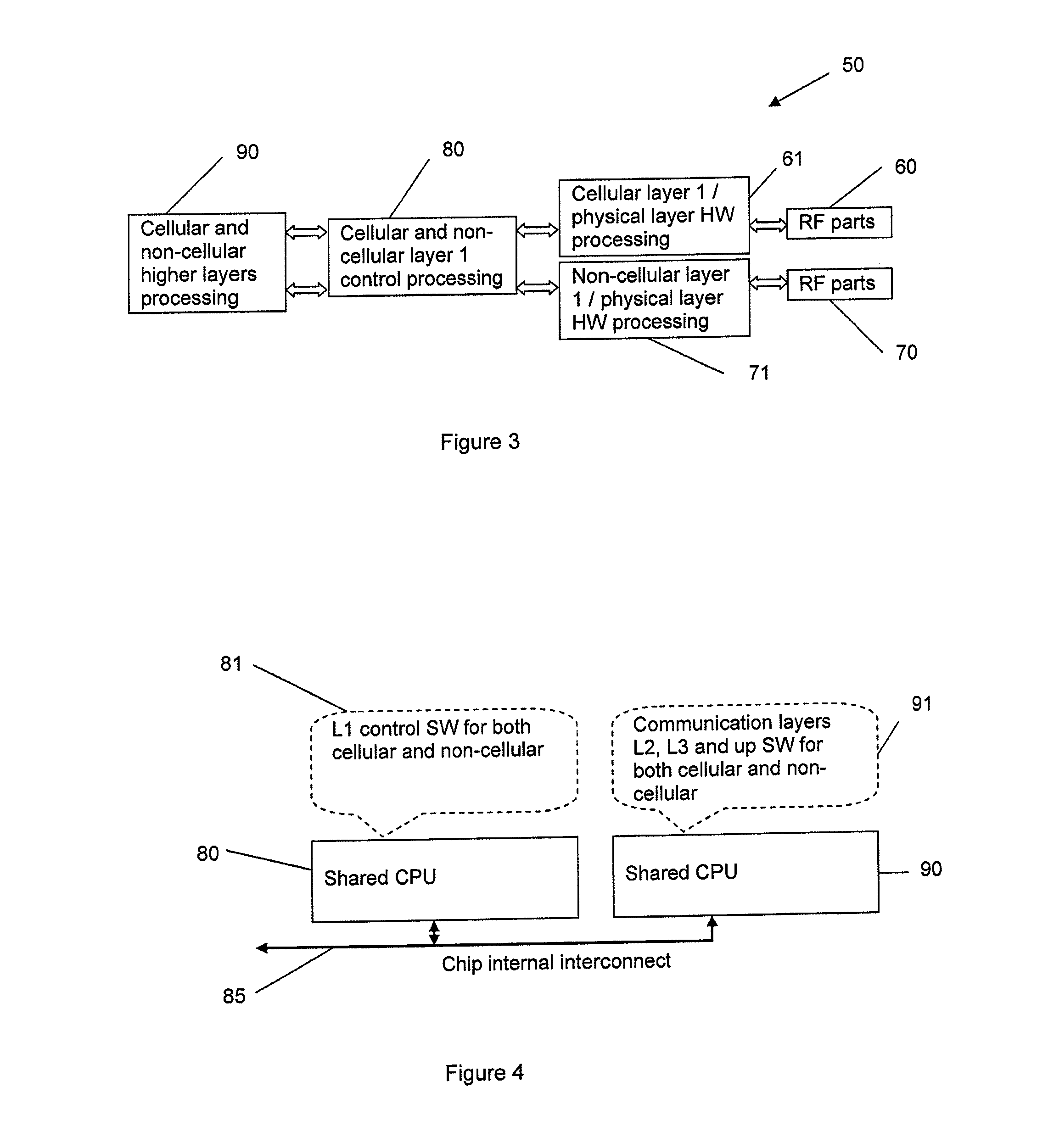Processor arrangement for multi mode wireless device
a wireless device and multi-mode technology, applied in the field of multi-mode wireless device processing arrangement, can solve the problems of increasing the space required within the wireless device for the radio components, increasing the power consumption in use, and inevitably increasing the cost of hardware duplication, and achieves high single-mode performan
- Summary
- Abstract
- Description
- Claims
- Application Information
AI Technical Summary
Benefits of technology
Problems solved by technology
Method used
Image
Examples
Embodiment Construction
[0030]Referring to FIG. 3, there is shown schematically the main hardware components of an example of a multi mode wireless device 50 according to an embodiment of the present invention. This example is a dual mode device 50 capable of operating on both cellular and non-cellular networks, and, in the preferred embodiments, in general is capable of operating on both cellular and non-cellular networks simultaneously. This has the advantage for example that the device 50 can be used for voice communication (via the cellular network) and be in data communication (via the non-cellular network) simultaneously. A user can therefore be receiving or transmitting a data file and holding a telephone voice conversation on the device at the same time. As another example, a M2M (machine-to-machine) gateway type device can simultaneously receive data and transmit data (typically on a non-cellular network and on a cellular network respectively, though other arrangements are possible).
[0031]In this ...
PUM
 Login to View More
Login to View More Abstract
Description
Claims
Application Information
 Login to View More
Login to View More - R&D
- Intellectual Property
- Life Sciences
- Materials
- Tech Scout
- Unparalleled Data Quality
- Higher Quality Content
- 60% Fewer Hallucinations
Browse by: Latest US Patents, China's latest patents, Technical Efficacy Thesaurus, Application Domain, Technology Topic, Popular Technical Reports.
© 2025 PatSnap. All rights reserved.Legal|Privacy policy|Modern Slavery Act Transparency Statement|Sitemap|About US| Contact US: help@patsnap.com



